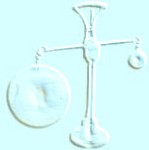

 Menu
Menu
|
School Castelvž |

|
||
|
Function It is used to demonstrate the compressibility of gases and the incompressibility of liquids. | |||
|
|||
|
Description The apparatus is made of varnished metal. The intermittence is due to the difference of diameter between the efflux hole of the sphere and that formed by the tube. The first lets the water flow only when the second tube is free, that is when the air can come into the top side of the sphere across the right lateral tube. | |||
|
School Spano |

|
||
|
Function Effects of the pressure. | |||
|
|||
|
Description The container is like a bottle with a base. It has a metallic escutcheon, to which a brass tube with key is applied. The tube reaches the bottom of the container and a compression pump with a valve. This is used also as a safety valve. With the pump we compress the air over the water in the bottle and we close the key. When we open the key, we have a jet that is proportional to the strength of the pressure of the air. | |||
|
School Spano |

|
||
|
Function To study the effects of the atmospheric pressure. |
|||
|
|||
|
Description This apparatus must be applied to the pneumatic pump. It only needs a simple pressure on the opening of the plate with the intermediary of a rubber top with a hole. When we turn the key, we have a partial vacuum. Then we close it. We introduce the lower part of the cock into the water, and when we open we obtain a violent jet. If the rarefaction is exaggerated, the water could fill the tube-test completely. When the experiment is over, the water is extracted by opening the cock. | |||
|
School Spano |
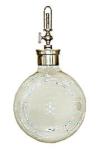
|
||
|
Function Measure of the mass of air held in a globe. | |||
|
|||
|
Description The glass globe has a capacity of two litres and it is provided with an escutcheon with a screw lid and cock. It is applied onto the pneumatic pump with a rubber tube or with a perforated rubber stopper placed over the opening of the plate. After the vacuum has been completed, we hang the globe from the hydrostatic balance and we establish the equilibrium. By then opening the key the balance goes towards the side of the globe. The weights that we must add to the opposite side, give us the weight of the air extracted from the pump. | |||
|
School Spano |

|
||
|
Function To study the effects of the atmospheric pressure. | |||
|
|||
|
Description It is a strong tube-test with an emery-polished basis, to apply onto the plate of the pneumatic pump. The bottom is crossed by a glass tube curved at the bottom, so that the drops of mercury coming from above cannot enter the pump. To the neck of the tube-test on emery-polished cylindrical funnel is adapted. The 3-centimetre diameter bottom of the funnel is fixed to a wood disk. To obtain a good result, it is convenient to oil the basis and the neck. When the pump works, the mercury placed in the upper funnel, crosses the wooden bottom like a tiny rain and it assembles in the bottom of the tube-test. | |||
|
School Azuni |
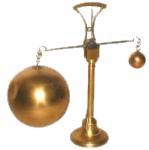
|
||
|
Function To study the Archimedean principle in the gases. | |||
|
|||
|
Description The beam of a little balance carries a hollow brass sphere on one side and a little solid sphere of brass on the other side. At the normal atmospheric pressure the two weights are in equilibrium. In rarefied air the beam leans towards the sphere with greater volume. | |||
|
School University (1), Spano (2) |
 (1) (1)
|
||
|
Function Effects of the atmospheric pressure. | |||
|
|||
|
Description The instrument is formed by two brass hemispheres each one connected by a short cylinder to a handle. One of the cylinders is hollow and presents a connection with key to connect it to the pneumatic pump. Because of the great surface of the instrument a great vacuum is not necessary. | |||
|
School Spano |
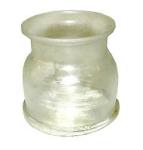
|
||
|
Function Effects of the atmospheric pressure. | |||
|
|||
|
Description To a cylinder with a solid wall we apply a disk of paper or a rubber sheet. By winding it under the edge of the cylinder. If the paper is homogeneous and very dry, a paper disk corresponding to the diameter of the glass will detach itself after the first blows of the piston. The rubber sheet expands along the internal wall of the cylinder and on the plate, also closing the hole of communication. | |||
|
School Spano |
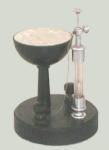
|
||
|
Function Used in the study of osmosis. | |||
|
|||
|
Description A little film of gypsum is put in the place of a porous vessel. A clutch bar is linked to the lateral manometer, so that the exit of the air above the mercury column is free. The shift of the bar causes the contact. The basis of the instrument is in cast iron. To avoid sparks of transient current it is advised to use a small tension (2 volt). | |||